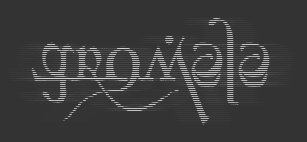
Selected Art & Design Work
1994-2003
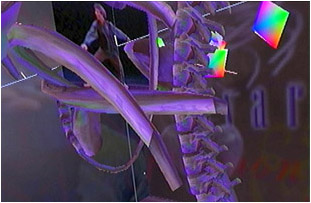
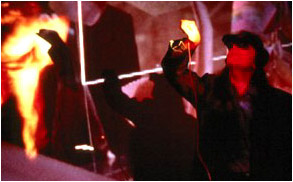
Dancing with the Virtual Dervish : Virtual Bodies
Co-creators and co-producers: Diane Gromala (50%) and Yacov Sharir (50%).
This landmark artwork in virtual reality (VR) received unprecedented art funding from the National Department of Communication, Canada, and the Banff Center for the Arts. It was one of six selected from an international pool of collaborative groups which includes the foremost media artists and computer scientists working with virtual and communications technologies. This artwork was one of the very first in VR.
The scope of the work required four computer scientists and six art technicians over two years. The computing demands of the new medium necessitated 3 forms of dissemination: major dance/theatrical performances, interactive exhibitions, and large scale video screenings. As a major dance and theatrical production, Dancing with the Virtual Dervish: Virtual Bodies premiered at the Banff Centre for the Arts, with two subsequent peer-reviewed performances at international art venues.
This work resulted in numerous performances, exhibitions, and screenings, as well as lectures, peer-reviewed publications, and broadcasts on the Discovery Channel and the BBC. It is frequently cited in books (art and computer science), journals, and online sites.
This was the first artistic VR artwork concerned with embodiment. The VR "world"
was constructed form MRI data from Gromala's torso, and comprised sternum, ribs, a kidney, a lung, a heart a spine and a pelvis. The body was in a continual state of decay and reformation depending on immersants' navigational movements. As immersants "flew" (six degrees of freedom) through the body parts they expected to enter smaller worlds, but were confronted with enormous, surreal spaces. At this point naviagtion was only possible through spatialized sound. The sensation of flying and spatial dissonance provoked immersants to become aware of their proprioceptive sense, which we are usually not aware of.
2001 - Present
Meditation Chamber
Co-creators and co-producers: Diane Gromala, Larry Hodges, Chris Shaw, & Fleming Seay.
The Meditation Chamber is a novel combination of immersive virtual reality (VR) and biofeedback technologies. Its primary goal is to help users lower their stress levels through meditation and muscle relaxation. Its secondary goal is to enable users who have never meditated to gain real-time feedback that allows them to sense when they are indeed lowering the physiological states that are indicative of meditating. During its first use – an exhibition at SIGGRAPH 2001, between Emerging Technologies and the Art Gallery — the relaxation levels of 411 users were studied. It is now in use in over 20 hospitals worldwide through Virtually Better and its clinical partners.
This was a foundational work for subsequent immersive VR pain therapy.
Virtual Meditative Walk
The Virtual Meditative Walk is an extension of the Meditation Chamber, where a self-regulated treadmill is added to our VR environment and biofeedback technology. Instead of sitting, users of the Virtual Meditative Walk learn how to meditate while they walk through virtual landscapes, which are displayed stereoscopically and binaurally. Simultaneously, real-time feedback of users’ physiological states alters these visuals and sound. This is arguably a more intense practice of meditation, as the meditators are in constant motion. This ongoing work is being studied as a way to train some of the estimated 1 in 5 North Americans who suffer from Chronic Pain to self modulate their experience of pain. To date we are unaware of other researchers who are using immersive VR as a non-pharmalogical analgesic. This is a collaboration of the Transforming Pain Research Group, Diane Gromala founding director.
2004 - 2007
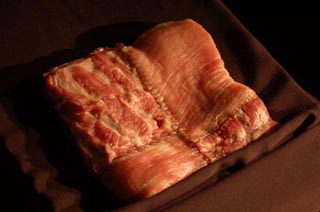
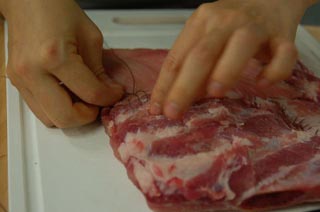
Meatbook
The Meatbook, an interactive art installation, explores the use of a novel tangible interace to provoke a visceral response in the viewer. The Meatbook presentes the symbiosis of the mechanical and the organic as it simultaneously juxtaposes the conflicting materiality of these media. Sensors, motors and other mechanics are used to animate the meat, generating movements specifically designed to produce visceral, even cathartic responses from the user. By simultaneously generating revulsion and fascionation, the user undergoes an embodied experience in which the alien and the familiar come together in the form of a book.
The Meatbook was an experiment for Gromala's dissertation on the visceral.
Visit the Meatook Website:
http://meatbook.iat.sfu.ca/index.html
2001-2006

Biomorphic Typography
BioMorphic Typography is Gromala's term for a family of fonts that respond, in real-time, to a user's changing physical states, as measured by a biofeedback device. Rather than one typeface, it is a postmodern pastiche of many different fonts that are continually morphing. These fonts interogate assumptions from the history of writing. So, for example, the font "throbs" as the user's/writer's heart beats. In this way, users become aware of their autonomic states. The goal is to develop new approaches to experiential design that focus on the senses and the history of the body and writing.
2008 - 2010
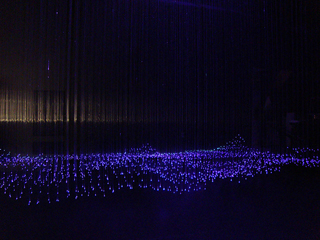
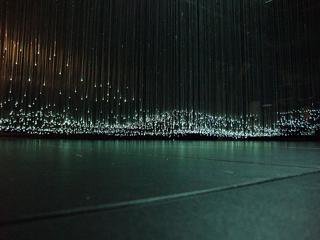
Lightstrings
Funded by a SSHRC grant.
Lightstrings is an example of Gromala's wide-ranging view of immersive envioronments and VR. Lightstrings is an immersive environment (15ft * 11ft * 12ft) filled with 2500 fiber optic lights hung from the ceiling in long straight strands to create an immersive tactile space of fine threads of light.. The system includes two computers for tracking the gestures of visitors and generating audio and video responses.